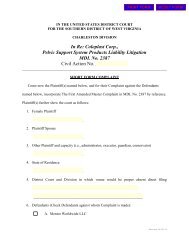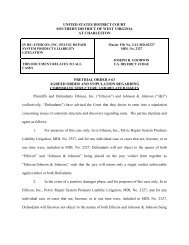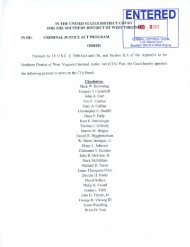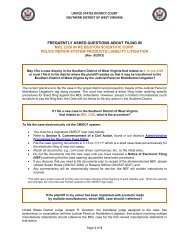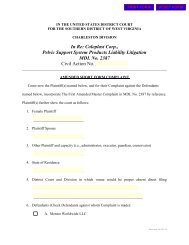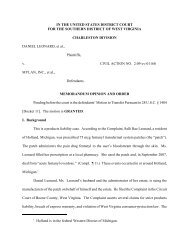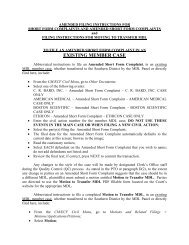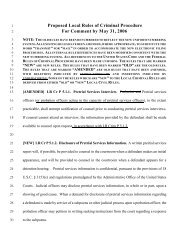R:\Storage\AE\Chapman, Ronald (C)\Order denying motion to ...
R:\Storage\AE\Chapman, Ronald (C)\Order denying motion to ...
R:\Storage\AE\Chapman, Ronald (C)\Order denying motion to ...
Create successful ePaper yourself
Turn your PDF publications into a flip-book with our unique Google optimized e-Paper software.
These militia-dependant interpretations of the Second Amendment were soundly rejected bythe Supreme Court in Heller. 128 S.Ct. 2783 (2008). The question before the Heller court was theconstitutionality of a District of Columbia statute that “generally prohibit[ed] the possession ofhandguns” by all persons within the District, save a few narrowly defined exceptions. Id. at 2788.It also prohibited lawful gun owners from keeping their firearms loaded or effectively “functional”within the home. Id. The outcome of the case depended upon whether the Court interpreted theSecond Amendment as a right which could only be exercised in connection with a militia (in whichcase the statute would be lawful) or whether the right was broader and protected some individualright <strong>to</strong> keep firearms for a citizen’s own use – unconnected with any militia (in which case thebroad D.C. gun ban would likely fail <strong>to</strong> pass constitutional muster). In reviewing the SecondAmendment, the Court divided it in<strong>to</strong> its operative clause – “the right of the people <strong>to</strong> keep and bearArms, shall not be infringed,” and its prefa<strong>to</strong>ry clause – “[a] well regulated Militia, being necessary<strong>to</strong> the security of a free State.” Id. at 2789. After conducting a his<strong>to</strong>rical inquiry in<strong>to</strong> the meaningof the statute’s text, the Court determined that the operative clause did encompass an individualcitizen’s right <strong>to</strong> keep and bear arms apart from militia service and that this phrase was not <strong>to</strong> belimited by the prefa<strong>to</strong>ry clause. Id. at 2801-02. The prefa<strong>to</strong>ry clause, the Court explained, announcesa purpose for enacting the amendment but does not define the right protected. Id. In fact, the Courtfound that the “core” of the Second Amendment protection was, not participation in a militia, butprotecting an interest in “the right of law-abiding, responsible citizens <strong>to</strong> use arms in the defense ofhearth and home.” Id. at 2818, 2821.The Court declined <strong>to</strong> establish a particular level of constitutional scrutiny for review of thestatute, because “[u]nder any of the standards of scrutiny that we have applied <strong>to</strong> enumerated-11-



